1968 Ford Mustang California Special
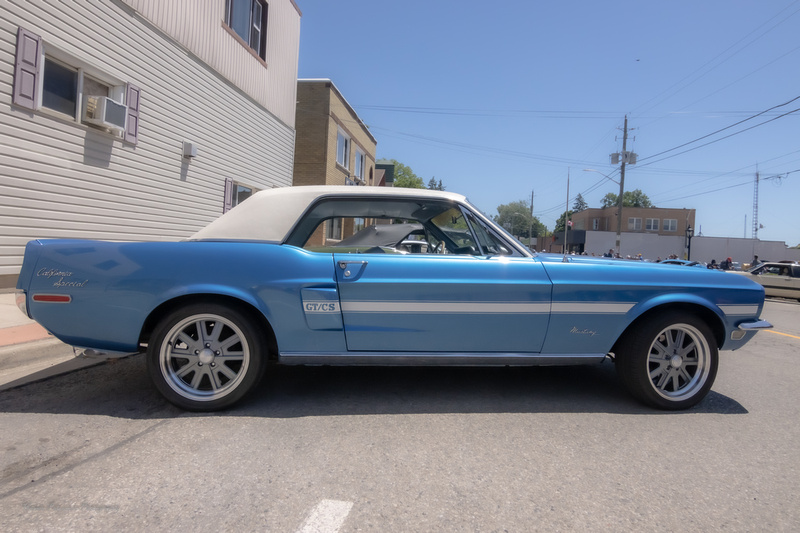

Ford's introduction of the Mustang set the stage for the most successful new car launch ever. In 1965, its first model year on sale (admittedly longer than the usual calendar year given its April of '64 introduction), Ford sold well over 600,000 and then repeated that feat again in 1966. But sales dropped by more than 20 percent for 1967 and fell again in 1968 to roughly half those early results as the competition was finally catching up.
One way to boost flagging sales of almost any model is with a special edition. Dealers love them because customers like to feel they are buying something unique, something that not everyone else has. By the late Sixties, the regional dealer groups knew how to work the specials. Ford's Colorado region had produced a High Country Special since 1966. The HCS models came out of Ford's San Jose, California, plant in three hues created especially for the promotion. Dealers finished the models by affixing shield-shaped badges to the front fenders via sheet metal screws. The shields had a mustang galloping above a mountain scape with the words "High Country Special." While the HCS didn't sell in giant quantities, its success still got noticed by other Ford professionals.
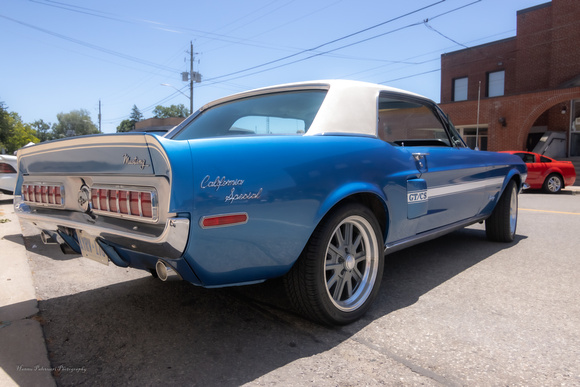

It got the attention of Ford Southern California District Sales Manager Lee Grey who was enamored of the looks of the 1967 Shelby Little Red prototype Mustang coupe (a beast of a performer with a supercharged 427 under the hood). He figured a special edition Mustang for his region based on Little Red's looks would give sales just the right shot it needed. The story has it that Grey borrowed Little Red from Shelby and convinced Lee Iacocca, president of Ford, to sign off on the car. Apparently, even Henry Ford II, CEO, and Iacocca's boss, also gave it the nod of approval.
Unlike Little Red, the California Special would have no special performance parts. The GT/CS equipment package would be entirely cosmetic, with almost all available Mustang options still on the table. The catch was that Ford only offered the GT/CS on the notchback coupe, and only in select markets in the western half of the country and Canada. Beyond Southern California, Ford also marketed the cars in Dallas, Phoenix, Seattle, Salt Lake City, and even the Kansas City district. Berge Ford of Mesa, Arizona, originally delivered the Meadowlark Yellow GT/CS featured on these pages to its first customer.
For the final design of the California Special, Ford turned to Shelby American, which built a small run of prototypes to parade in front of dealers, who were as impressed as Grey and signed up to order a bunch of cars. Like other Shelby products in 1968, the custom components were manufactured by A.O. Smith in Michigan, though final assembly on GT/CS models took place at Ford's San Jose, California, plant.
Between February 17 and July 30 of 1968, the San Jose plant turned out some 4,118 California Specials, which were shipped to and being sold from California to Texas, to Missouri and as far north as Canada.
Given the build location, all GT/CS VINs should begin with the sequence "8R01." With the Special's personality merely skin deep, buyers could order just about any options they wanted, so long as those options were available on a standard Mustang coupe.
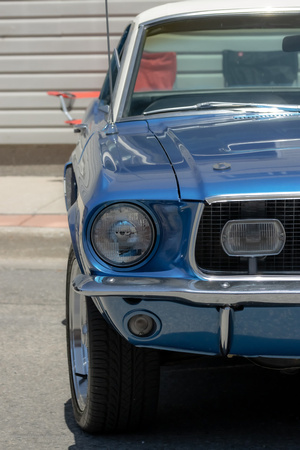

Priced at $194.31 and listed on the window sticker as the "GT/CS EQUIP PACKAGE," the California Special included the addition of a host of fiberglass parts that gave the model a very Shelby-like and aggressive look: a decklid with integrated spoiler and quarter-panel extensions to match; non-functional body-side scoops; and a lower back panel. Standard Mustang taillamps were ditched in favor of horizontal units from the '65 Thunderbird. If that back end looks familiar, it's probably because you've got a '68 Shelby Mustang convertible tail in your mind. The trunk and quarter-panel extensions were common to both models, as were the taillamps cribbed from the Thunderbird.
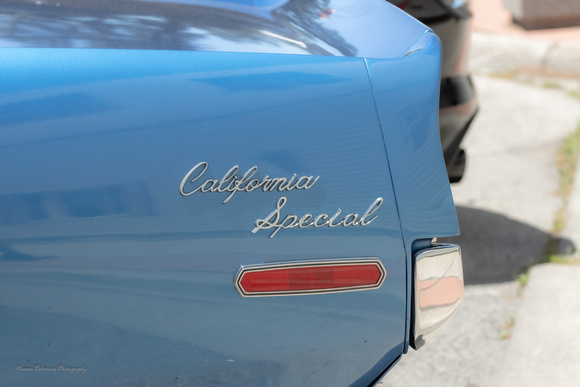

Unlike the side scoops, the vented louvers in the hood were functional, at least in terms of allowing heat to escape. That hood was held down by DZUS-type hood locks. Also at the front of the car, the usual "corralled mustang" in the center of the all-black grille got the eviction notice for the GT/ CS. Instead of that shiny horse in the center, the grille featured a pair of rectangular fog lamps, first Marchal and later Lucas, a running change during production apparently related to California safety laws. Ford also installed an extra-large gas cap, similar to the ones used on the GT and Shelby models, but with just the running mustang on it. Ford dealers sold this gas cap as an accessory for any Mustang.
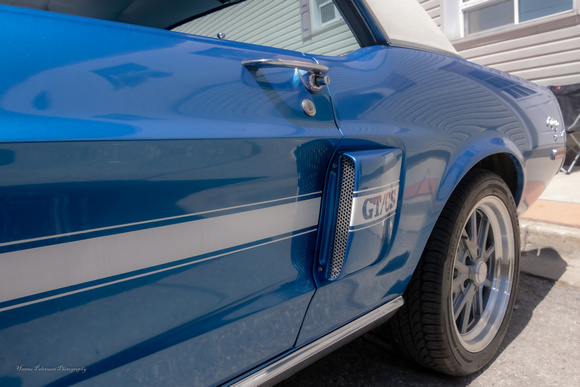

Contrasting body stripes were part of the package. The triple stripes—thin lines on top and bottom of a much thicker stripe—started at the front fender and ended at the quarter-panel scoops. The "GT/ CS" badging appears in body color as cutout, or negative, lettering on the scoops, like a stencil. Cursive-script "California Special" badges were cast in metal and screwed on each rear quarter panel.
Fortunately, many of the parts that made the California Special stand out from other common, garden-variety '68 Mustangs are still available, being reproduced for what has been a robust Mustang aftermarket for decades. For example, complete fiberglass trunk-lid kits, including the quarter-panel extensions, remain available, suitable for GT/CS or Shelby convertible applications. It should be noted that the side scoops are not identical to the functional side scoops found on Shelby Mustangs in 1968, despite looking very similar. Beyond these features, GT/CS Mustangs in 1968 carried the same options and colors as were available on any other Mustang.
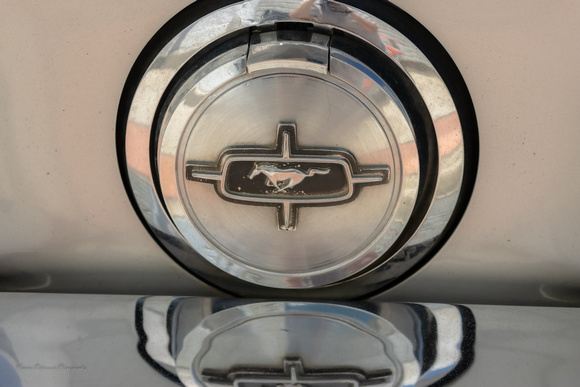

Features
The GT/CS California Special may have carried the GT name, but they were not necessarily Mustang GTs. In fact, buyers could get any engine in the '68 Mustang lineup under the hood of the GT/CS, not just the GT engine options, and by 1968, the Mustang engine option list included nearly every displacement sold that year with the Ford name on it.
Base Mustangs, and hence, base GT/CS, came standard with the 115-hp, 200-cu.in. straight-six, a solid, if not particularly remarkable, engine. The first step came in the form of the C-code two-barrel, 195-horse, 289-cu.in. Challenger V-8. During the '68 model year, Ford retired the 289 in favor of the F-code two-barrel, 210-hp 302. Billed as the Challenger Special V-8 in the Mustang was another 302, the J-code four-barrel, 10:1 engine that produced 230 horsepower.
Beyond the small-block options, Ford offered three big-block V-8s for Mustang in 1968. The X-code 390 was a two-barrel, high-compression (10.5:1) 280-hp version of Ford's FE big-block V-8. A four-barrel engine with the same compression, named the Thunderbird Special V-8, the S-code 390 was rated at 325 hp for 1968.
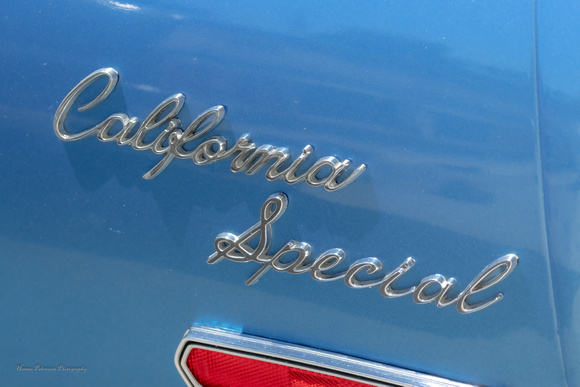

The hottest offering for '68 came in the form of the R-code 428 V-8, aka the Cobra Jet. Released close to the March 1 introduction of the California Special, the 428 put out an advertised 335 horsepower and almost instantly made the Mustang a force to be reckoned with at the strip. According to both legend and data, Ford made just three California Specials equipped with the 428 Cobra Jet. See the next page regarding transmission options for the GT/CS.
Despite brochures printed with the race-ready 427-cu.in. V-8 as an option, no record has ever been found of Ford installing that expensive-to-produce engine in any production Mustang in 1968. Now, that's not to say that plenty of enterprising muscle-car fanatics have not installed 427s in their pony cars over the years; it's just that the factory declined to do so as the 428 Cobra Jet was being prepared and tooled up for production.
Standard suspension on the unit-body Ford Mustang in 1968 included an independent front setup with coil springs, upper wishbones, single lower arms, an anti-roll bar, and tubular shock absorbers. In the rear, Mustang featured a solid axle with semi-elliptical leaf springs and tubular shocks.
California Special buyers who opted for a V-8 and also ticked the box for the GT Equipment Package with their California Specials got the following: dual exhausts with "quad-exhaust" tips, Wide- Oval tires on 6-inch wide GT-style wheels with "GT" emblazoned hubcaps and a heavy-duty suspension with beefier shocks and springs and a thicker anti-roll bar. What those buyers didn't get that standard GT buyers did included the GT badges, the GT round fog lamps, the GT stripes, the GT gas cap, and anything else supplanted by the GT/CS equipment package.
Since pony cars were the hot segment at the time, Ford offered a long, long list of options for the Mustang, including front disc brakes, power steering, air conditioning (more expensive in 1968 than most engine options!), limited-slip differential, interior décor group—and so on.
Transmission
Just as Ford offered any Mustang engine on the GT/CS, the same freedom applied to transmission options, based on the matrix of engine and gearbox options available. For instance, Ford's three-speed manual was standard with the 200 six or either of the small-block V-8s, with an automatic optional. The four-speed Toploader could be paired with either of the small V-8s, but not with the six. If you wanted to row your own with the six, you got three cogs. With the big-block options, only the three-speed automatic and a four-speed manual could be ordered, with a close-ratio four-speed reserved for those high-performance big-blocks.
Differential
Ford used axles with either an 8-inch or a 9-inch ring gear, the latter reserved for high-performance models. Final drive ratios from 2.75:1 to 3.50:1 were offered from the factory with additional shorter ratios becoming available for high-performance applications, such as the 428 Cobra Jet models. Both open and limited-slip differentials were available in most ratios.
BRAKES
FrontRear Standard: 9-inch drums (six cylinder) 10-inch drums Standard: 10-inch drums (V-8) 10-inch drums Optional: 11.3-inch discs10-inch drums
WHEELS
TypeSize Stamped steel14 x 6 inches
TIRES
TypeSize Bias-ply6.95 x 14 White sidewall tires6.95 x 14 Wide-Oval, bias-ply*F70-14 Wide-Oval, radial*FR70-14
BODY
All GT/CS models were coupes and the changes to the body are what made a California Special "special." The Shelby-designed and inspired pieces included a fiberglass trunk lid with integrated “duck tail” spoiler, quarterpanel extensions, and non-functional side scoops. The GT/CS also featured a blacked-out grille with no prancing pony in the center. Ford factory workers installed rectangular fog lamps from Marchal or Lucas, depending on production date. All California Specials were also treated to a unique triple-line stripe from the front fender to the first part of the quarter panel, where the stripes end at the body-side scoops. Exterior stripe colors included white, metallic blue, red, and black.
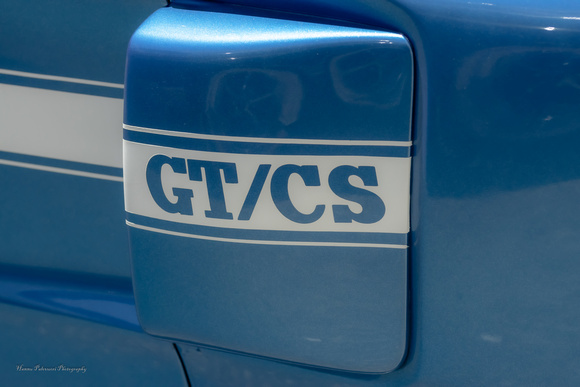

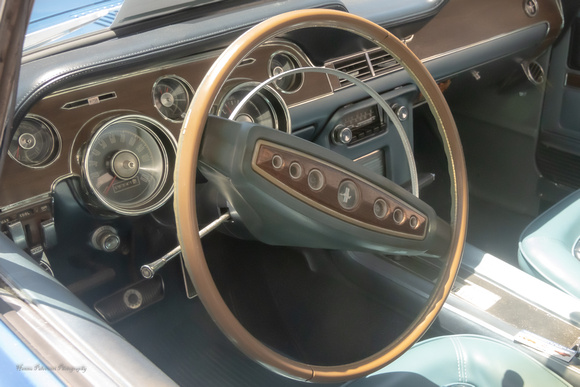

INTERIOR
The '68 Ford Mustang made no bones about its sporty intentions. Even the base-model Mustang included vinyl-covered bucket seats as standard. Mustang's five-gauge instrument cluster was also seemingly pulled from the sport-car menu. Beyond the basic stuff, Mustang's interior options were quite extensive, with the Interior Décor Group (courtesy lights, roof console with map lights, simulated woodgrain dash and steering wheel, seat back trim buttons, etc.) a popular take. A range of radio options was also available, as was a console and air conditioning. The great news for owners is that many components that might be hard to find on other models are well represented in the reproduction aftermarket for Mustang.
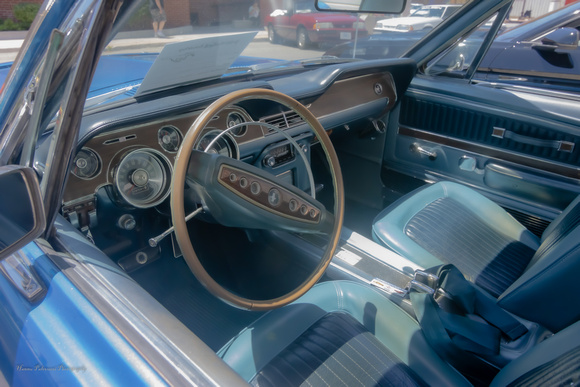

CHASSIS
Every California Special is a two-door hardtop coupe. Ford made no convertible or fastback GT/CS models. The Mustang was a relatively simple car, using unit-body construction and a conventional independent front suspension with coil springs, tube shocks, and an anti-roll bar up front. In the rear, there were leaf springs, tube shocks, and a live axle driving the wheels. Drum brakes all around were standard, but front discs and power brakes were optional. Like most Mustang components, maintenance, replacement, reproduction, and upgraded parts are available for the suspension and brakes.
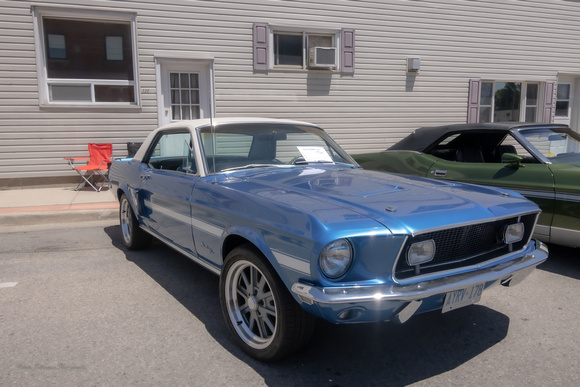

Sources:
https://www.hemmings.com/stories/article/1968-ford-mustang-gt-cs-california-special
https://www.mustangspecs.com/1968-ford-mustang-california-specials/
https://www.motortrend.com/features/mump-0710-1968-ford-mustang-california-special/
https://www.motorious.com/articles/handpicked/california-dreams-1968-mustang-gt-cs/
https://bringatrailer.com/listing/1968-ford-mustang-california-special-10/